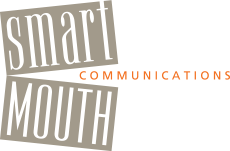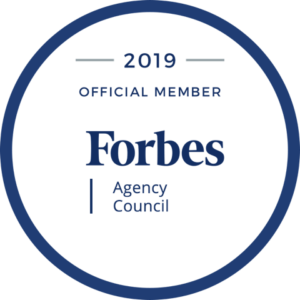SmartMouth Talks!
Turning Gold Into Gold
 When Pat Williams @OrlandoMagicPat – a long-time legend in the NBA, most recently as co-founder and SVP of the Orlando Magic – interviewed me about Jock Talk for his radio show on WORL in Orlando, “Inside the Game,” I didn’t know that he too had written a book on public speaking from the vantage point of sports figures.
When Pat Williams @OrlandoMagicPat – a long-time legend in the NBA, most recently as co-founder and SVP of the Orlando Magic – interviewed me about Jock Talk for his radio show on WORL in Orlando, “Inside the Game,” I didn’t know that he too had written a book on public speaking from the vantage point of sports figures.
He told me after the interview that he wanted to send me something. What he sent was his book. As I read through it, I came across a lot of values and concepts he and I held in common.
Because of my work with professional and world-class athletes – and most recently with a medal-winning Olympian – one passage in particular caught my attention:
“There are many retired athletes from various sports who have a lot to offer on the convention and corporate lecture circuit. They could command five-figure speaking fees, but what are they doing? They’re earning a fraction of that, signing autographs at sports memorabilia shows. Nothing wrong with that, but why not take their game to the next level? Why not share the real wisdom that they have to offer? Why not organize their stories and ideas into a presentation that would change lives – including their own?
It’s essentially a matter of organization, planning, and preparation. The only confident, influential speaker is a prepared speaker. Organization and preparation are vital to your success as a communicator.“
Pat has it right. Many retired athletes do miss a great opportunity to tell their story and offer concrete value to corporate audiences.
For any speaker, it can seem daunting to figure out what that value is, but, with a little organization, planning and preparation, it’s definitely doable. Even if you’re not a gold-medal Olympian – but you’re an engineer or a scientist or an entrepreneur – you will still benefit from taking the time and focus to identify your valuable lesson(s) before you speak.
To find your valuable lesson(s), it might help to imagine a Venn diagram: The first circle represents you, your knowledge and expertise, and the second represents your audience and their interests. You have to figure out what’s in the shaded area where the circles intersect. For you, it is an insight or lesson you can offer. For your audience, it is what they want or need. The third circle of the Venn diagram makes it more challenging – it represents what other experts or speakers have to offer.
If you really want to stand out as a speaker, you will spend some time fine-tuning the area of the diagram where you intersect with the audience but other speakers don’t. In other words, given your expertise, what can you talk about that is of interest to your audience that no one else can offer?
For retired athletes, this exercise should be a layup, so to speak. For the rest of us, admittedly it’s more challenging … but it’s well within reach and very worthwhile.
Plunge!
“Students of public speaking continually ask, ‘How can I overcome self-consciousness and the fear that paralyzes me before an audience?’
Did you ever notice in looking from a train window that some horses feed near the track and never even pause to look up at the thundering cars, while just ahead at the next railroad crossing a farmer’s wife will be nervously trying to quiet her scared horse as the train goes by? How would you cure a horse that is afraid of cars—graze him in a back-woods lot where he would never see steam-engines or automobiles, or drive or pasture him where he would frequently see the machines?
Apply horse-sense to ridding yourself of self-consciousness and fear: face an audience as frequently as you can, and you will soon stop shying. You can never attain freedom from stage-fright by reading a treatise. A book may give you excellent suggestions on how best to conduct yourself in the water, but sooner or later you must get wet, perhaps even strangle and be ‘half scared to death.’ There are a great many ‘wetless’ bathing suits worn at the seashore, but no one ever learns to swim in them. To plunge is the only way.”
Here’s to You!
 I was reminded yesterday by @TanyaRivero on @WSJLive that it’s wedding season, which means lots of toasts are being delivered. Best Man toasts. Maid of Honor toasts. Father of the Bride toasts. You name it!
I was reminded yesterday by @TanyaRivero on @WSJLive that it’s wedding season, which means lots of toasts are being delivered. Best Man toasts. Maid of Honor toasts. Father of the Bride toasts. You name it!
The way I see it, toasts fall under the category of highly personal speeches – a category that includes not just toasts, but eulogies, graduation and retirement sendoffs and the like. These kinds of speeches are often touching and/or funny, yet they also provide the perfect storm for audience-centricity to implode; the topic is limited to a couple or person, the speaker was chosen for their special relationship to the couple or person, and the audience is made up of people who also have their own special relationships with the couple or person.
Sounds like the perfect storm for perfection not disaster, right? Wrong. Apart from the notorious toast flops that include revealing long-held secrets or telling inappropriate stories, there’s another potentially damaging dynamic that happens when the speaker isn’t careful. And that is, they make the audience feel badly. By taking the opportunity to share personal stories, sometimes to excess or even exclusively, the toaster can make the audience feel left out or less important to the people being toasted. It ends up feeling exclusive and not inclusive to the audience.
By contrast, a speaker who embraces the principle of audience-centricity during a toast or other highly personal speech might talk about the qualities or experiences that everyone in the room knows about and can appreciate or laugh at; they might share lessons learned from the couple or person being toasted that everyone can related to; or they might take a bigger picture view of the occasion and talk only about the couple or the person and not even include their own personal connection.
The audience-centric speaker in the case of a wedding toast or other highly personal speech opens the tent wide so that everyone in attendance feels connected and feels like they could have toasted the couple or person with that very same speech.
#Brevity
Nothing informs the future of business communication quite like the need for brevity in meetings and presentations.
Brevity is not simply about using less time or saying less, it’s about being efficient with your communications. It’s about identifying the meaningful, meaty parts of your content and delivering those without unnecessary fluff, background or side points.
Brevity requires you to prepare, prioritize, and package your material. Prioritizing is the key here.
A couple of #Brevity tips:
- Serve dessert first: If you have a takeaway or call to action, don’t save it for the end, deliver it up front (the ultimate priority!). It helps set context and expectations, which are important for holding onto audience attention.
- Go modular: Build your presentation in chunks rather than in a narrative so you can remain adaptable. You might be reading your audience and want to jump to only the most important chunks (prioritizing again!), or your time might be cut short unexpectedly. Chunks leave you prepared and nimble.
- Know your big fish and little fish: Within those presentation chunks, know your main points or big fish (this requires you to … yep, prioritize your material) and your supporting information or little fish. Big fish come first. Leading or inundating with lots of little fish, or too much information, is overwhelming to both speaker and audience.
Even if attention spans were infinite, which we know they’re not, brevity is more efficient, which is valued and appreciated in any workplace!
Audience-Centricity Conundrum: Being Thorough or Getting Through?
Your topic is set. Your time is limited. You know it’s all about them – your audience – because you’ve wisely adopted the principle of audience-centricity for yourself as a communicator.
So, when preparing yourself for a presentation, ultimately the question for you is this: Which end result do you prefer? Standing in front of a group and being comprehensive, saying everything you know and covering everything in your slide deck? Or being selective and targeted and saying something— even just one thing—that actually resonates with your listeners and sticks in their minds?
Which presenter are you?
It’s your call.
Either way, let me know what you decide.
[*Excerpted in part from Jock Talk: 5 Communication Principles for Leaders as Exemplified by Legends of the Sports World, www.jocktalkbook.com]
Are You a Bystander?
There is quite a bit of consensus that business meetings and presentations are too often marked by mediocrity and tedium, and there are simply too few people calling phooey. It’s as if herd mentality got together with bystander effect and conspired to make time spent in conference rooms and boardrooms insufferable.
I’m trying to call phooey and help leaders and aspiring leaders raise the bar on business communications for themselves and their organizations.
Communication is the currency of success, it’s how we sell, persuade, motivate and inform. It’s how we get things done. The usual organizational values of excellence and efficiency can and should be applied to communication as well, but are they?
When it comes to how organizations communicate, I am struck by how corporate leaders strive for excellence and efficiencies in so many operational areas, yet are willing to settle for merely adequate—or worse, time-wasting—when it comes to business communications. Meetings, presentations, and speeches are so often where and how business gets done, but in these settings mediocrity abounds. Many companies in the manufacturing sector even subscribe to the tenets of the Lean Movement yet tolerate flab and time-wasting in communications.
Business audiences have come to expect and accept a relatively low standard. Well, what is standard in the business world may be adequate, but it’s not optimal and, let’s face it, it shouldn’t be acceptable. Think about how often you roll your eyes during meetings that are too long and, worse, pointless. Think about the boring presentations you’ve sat through—the ones in which you waited for the single valuable nugget, that one answer, that lone call to action that came at minute 52 out of an hour-long talk. Think about the speech by the CEO who was incredibly dry or who mouthed the same old-same old. A bar set at adequate or standard is far too low for organizations that expect excellent outcomes.
Don’t be a bystander. Do what you can to embrace good communications within your organization – and at the very least, for yourself!
[*Excerpted in part from Jock Talk: 5 Communication Principles for Leaders as Exemplified by Legends of the Sports World, www.jocktalkbook.com]
What Should We Do About This?
I have no advice to offer this week. I only have a question. What should we do about the issue of technology and presentations?
Let me tell you why I’m asking: Last week, I attended an event that featured 4 speakers, each of whom spoke for 8 minutes (ahem, there’s a brevity trend in our midst, I love it! #brevity #jocktalkbook). Each of the fours speakers was amazing. Their content was fresh, meaningful and tight, and everyone’s delivery was impeccable – they were poised, energetic, animated and kept their eyes on the audience at all times. Not a single flaw among the four.
But guess what? The technology failed and caused bumpy starts – followed by some fits and starts – for two of the four speakers.
I probably should mention before I go any further that the meeting was hosted and attended by technology professionals. Probably 100 of them, maybe more. Ergo, “user error” – or being unfamiliar with the equipment or software, as might happen with someone like me – can be scratched off the list of culprits.
So, here we are.
Technology fails. It does. And there are consequences. It wastes time. It dilutes the impact of a speaker’s opening. It forces an otherwise superstar speaker into an unexpected awkward moment. And perhaps worst of all, it causes the audience to roll their eyeballs (at least figuratively if not literally) and divert their attention to a side conversation or to their devices while they wait.
Ay caramba!, as Bart Simpson would say.
What should we do about this? It’s not even just a possibility that technology might fail, it’s more of a likelihood. We know this, don’t we? Yet we still bring our best stuff to a presentation on a flash drive or a laptop. The only thing I can think of is that we must be using some finely honed skills of denial, then holding our breath during set-up, and ultimately hoping for the best. I’m an optimist too, and that last sentence describes me too, but only sometimes. I have my own little over-compensation back-up plan. But not everyone does …
So what should we do about this? Visuals are awesome, but technology can be problematic – for speakers and their audiences. Thoughts? Ideas? Alternatives?
Weigh in, technology lovers!
Go Up, Look Down, You’re Prepared!
Preparation. Hmmm.
Don’t know where to begin? That can be solved by doing what I call “going up to 30,000 feet and looking down.” Take the biggest-picture view you can find on your topic and be thought-provoking about what’s at the core of your issue, or, as President George H. W. Bush is known to have called it, find that “vision thing.”
The view from 30,000 feet is the exact opposite of peering through the weeds, and while most people in an organization are by definition, and indeed by assignment, stuck in the day-to-day weeds, certainly a leader is in a position—and arguably has the responsibility—to rise to a higher vantage point.
For an example of a 30,000-foot view, let’s look at another of my clients, an entrepreneurial company that manufactures super-high-end sports equipment. The executives came to me for spokesperson training in advance of what they expected to be a busy season of trade shows and competitions where their products and sponsored athletes would attract a lot of attention. The engineering and technology that goes into the production of their equipment is as fascinating as it is dense with detail and data. Yet for the media—and for the benefit of building and promoting the brand—they needed to develop some higher-level messaging. The nitty-gritty details could be saved for the trade journals that craved them.
In a small-group session with the core executive team, I asked a series of questions to elicit the 30,000-foot view. Fundamentally, I was pushing and poking at them to home in and identify what their company is really all about. It’s not about the product line or producing the best equipment; it’s not about being made in America; it’s not even about satisfied customers. Those are all great attributes, but they’re closer to the ground. What the 30,000-foot exercise yielded in the end was that their company is all about three things, characterized in a different way: innovation, performance, and fun.
Having a 30,000-foot view of your organization’s work in your back pocket means you’re always prepared to speak at the higher visionary level befitting a leader. It gives you a go-to point when you need to make remarks that describe your work and its value.
[Excerpted from Jock Talk: 5 Communication Principles for Leaders as Exemplified by Legends of the Sports World, www.jocktalkbook.com]
Don’t be a Fool: Prepare!
Being prepared is just about the most audience-centric thing you can do. It confers a sense of importance and value on your listeners. It shows respect for their time and is arguably the least you can do in exchange for their attentiveness to you as a speaker. Plus, it ensures that what you deliver is actually received. Preparation shows—as does a lack of preparation.
All too often, though, people resist preparing for a talk or a media interview. Clients have told me it feels egotistical or self- important to them, and they feel—or want to appear—more humble than that. In their minds, preparing a “speech”—whether that means welcoming remarks at an event, a thank-you for an award, or even an introduction for a speaker—feels bloated and unnecessary. Still, the principle from the first chapter of this book applies: “It’s all about them—it’s not about you!” You have a responsibility to deliver something of value to your audience, and the best way to do that is to be prepared.
When a speaker or presenter is prepared, the audience notices. The speaker is on point, and the message is clear and relevant to the audience. The prepared speaker doesn’t open with, “Well, I didn’t have time to prepare anything, so I hope you’ll bear with me.” Instead, the prepared speaker opens with an anecdote or an attention-grabbing factoid specific to that particular audience. Or the prepared speaker knows his or her desired outcome and puts it out there right up front.
There are many who speak or present in front of groups often enough that they feel it’s okay—and in fact, for some it feels more comfortable—to just “wing it.” Wingers are gamblers. Sometimes they win, but other times they lose. Since the outcome can go either way, you have to ask yourself if you can afford a loss. Or can you afford even to risk it? If speech prep were short enough and simple enough, would you devote just a few seconds to being prepared? I think anyone would.
[Excerpted from Jock Talk: 5 Communication Principles for Leaders as Exemplified by Legends of the Sports World, www.jocktalkbook.com]
Brevity. Period.
Brevity.
One really easy and effective technique for keeping yourself on a diet of short and sweet is to think about talking less and engaging more – making your presentations more of a give and take. For example, make a point and then open up the floor for questions or discussion. Besides creating a change in stimulus, this gives you two other advantages: It provides you with feedback on your audience’s level of understanding and buy-in; and it gives you insight into their biases and self-interests, both of which you need to know to achieve your desired outcome. I often encourage clients to use this technique when they’ve been asked to speak for an hour. Knowing full well that an audience can hang in there for maybe 20 minutes at a time, I encourage people to switch it up and take a Q & A break after each topic section of their presentation, rather than saving audience comments and questions for the end.
Another way to enforce brevity on yourself is to be a minimalist in your preparation. By that, I mean limit your written preparation to some simple bullet points. Once you get involved in writing a script for yourself, you become more and more wedded to the actual words you’ve written and the detail you’ve fleshed out in your script. I have found that some people need to start with a full-text script for their preparation and then work their way down to bullet points, once they’re comfortable enough and familiar enough with the direction and content of their talk. That’s great, too.
Ultimately, if you walk into a room with just the bullet points, you’ll be less attached to the beautiful words and sentences you wrote and you’ll be able to be more present with your audience. This is not to say that there aren’t times that call for a full-text script; there may well be. But be aware that a script can shift you and your attention more to delivering what’s on the paper than to connecting with the audience.
[Excerpted from Jock Talk: 5 Communication Principles for Leaders as Exemplified by Legends of the Sports World, http://amzn.to/1vkcxjz]



